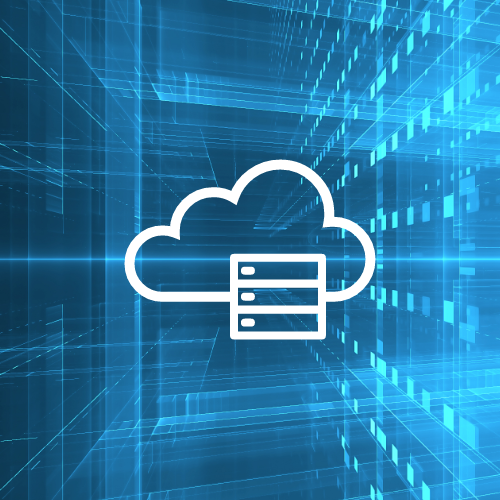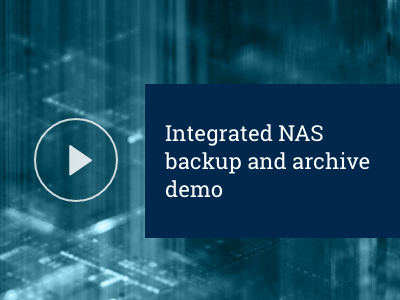Unstructured data is the elephant in the backup room, so to speak for many companies. Our CTO, Stephen Manley, talked about the challenges of protecting NAS data in a prior blog last year because both the data protection and long-term retention of data continue to be challenges for organizations. In short, many companies repeat a familiar and costly process for the backup and long-term retention of NAS data. First, they back up to warm storage and then tier this data to cold storage. But what savings and efficiencies might you achieve if you could back up NAS data directly to cold storage without intermediate steps or local infrastructure?
A new capability called the Druva Archive Storage Tier became generally available this month. This feature allows organizations to back up and archive large files such as images, media, medical imaging, engineering designs, etc. directly to cold storage for a 50% reduction in storage costs. This isn’t your typical back up to cold storage option. Let me explain why.
Backup is a system of record for many companies, and often they have specific sets of data that they know they need to keep. At a certain point in time, they no longer need to perform regular backups and they don’t expect to recover this data frequently. But this change in needs doesn’t diminish the importance of the data. It still needs to be accessible (available), but recovery time expectations are low. The archive data should be reliably preserved and searchable, but it does not need to be readily available for recovery.
For backup administrators, the options for keeping data for a long period of time appear diverse — tape, disk, or cloud. Yet, the questions should not be about the options, but rather the ease of use and cost.
If your retention times are long — 5, 10, 15, or 30 years or longer — sending this data to tape or disk in your data center is not a practical option for most organizations. Tape will require offsite storage and periodic rotation. Local disk presents similar challenges because you’ll need to move data across storage subsystems as the hardware ages. Indeed, this is why many NAS vendors offer the ability to age this data off to the cloud. While it seems like an easy and cost-effective way to address the archive data problem, consider the following:
- Storage model: Are you using the same storage model or a different one — storage tiering has been around for a long time and the cloud is just another tier. And storage tiering of primary storage is different from a backup copy (separate storage, different access roles).
- Cost: What type of storage efficiency do you get when you tier this data to the cloud? Is the data deduplicated? What type of cold storage are you using? Did you know that Amazon S3 Glacier Deep Archive is 70% less than Amazon S3 Glacier?
- Transparency and predictability: When you decide to archive data to cold storage, do you have an accurate and predictable cost model? For most organizations, the answer is usually no, especially if they have never worked with cloud storage.
- Ransomware: Companies need many tools in their belt to battle ransomware. Because ransomware can lie dormant for long periods of time, companies need a way to scan their archives and the ability to check the data before they recover it — especially if they have been attacked.
The Druva archive storage tier removes complexity and costs from how customers manage and retain unstructured data for compliance or business reasons. It’s built for a very specific data set — large file sizes (i.e. 2+MB) — which are no longer needed for typical operations, but need to be held for at least a year (usually many years). And this data is rarely recovered at scale, but rather customers occasionally need a few files or directories. Given this type of data, the question is really why treat this data the same as the files you use for the regular operation of your business?
One reason why organizations may not treat this data differently relates to the complexity of implementing and managing an archive storage tier. Yes, all cloud providers offer an archive storage tier, and many on-premises backup providers let you send a “copy” to a cloud provider of your choice. But the customer is left to choose and manage an archive cloud storage tier, predict their storage efficiencies, estimate savings vs. regular storage (assuming they know how much they spend on backup storage), and manage the monthly billing from their IaaS provider.
Druva addresses these concerns and offers a number of key advantages:
- Modern storage model: Druva manages cloud storage for you, eliminating the need to manage different cloud tiers.
- Huge savings: There is no need to predict archive efficiencies. Druva offers a 50% cost reduction as compared to regular storage. We can do this because we send data directly to cold storage and compress/deduplicate data at the source. As a result, we only store unique blocks in cold storage.
- Visibility: Total backup storage consumption doesn’t need to be a mystery — easily see warm, cold, and archive storage consumption.
- Predictable costs: Make costs predictable. Your costs are based on one metric — monthly consumption (after deduplication).
- Built-in security: Benefit from Druva’s cloud security and ransomware protection. All data stored in the Druva cloud benefits from our security model and cannot be encrypted by ransomware.
Take a bite out of your long-term retention costs
Unstructured data represents 60-80% of all corporate data, and large amounts of this data live on NAS storage (both on-premises and in the cloud). If you need a more cost-efficient way to back up NAS data sets for long-term retention, especially large files, then speak to Druva to see how you can realize up to 75% lower storage costs with the Druva Cloud Platform. The benefits of sending this data directly to a cold, cloud storage tier make sense. By skipping intermediary hops or storage for this data (e.g., warm storage), you can lower your backup and retention costs without sacrificing availability or security. Best of all, you don’t need to invest in a new infrastructure to enable this capability, Druva delivers data protection-as-a-service and on-demand at a pace that suits your business.
Want to learn more about how Druva’s leading solution for NAS lowers TCO for offsite backup and long-term retention? Watch the demo video below for an in-depth look at Druva in action.

